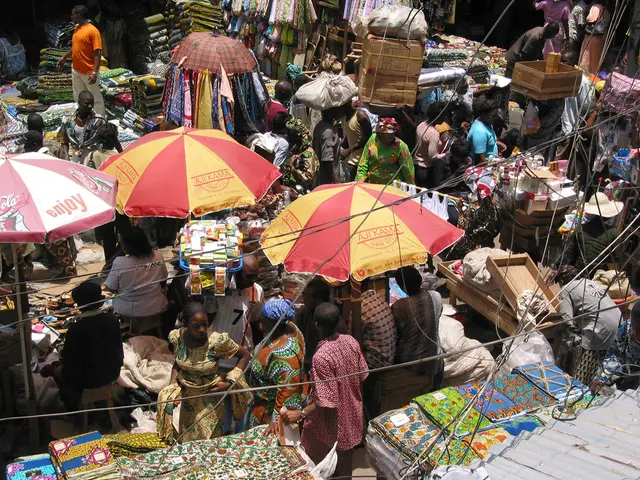Encouraging urban centers in tackling global warming initiatives
In a collaborative effort between the Ministry of Agriculture and Environment (MAE), the Global Environment Facility, and the Asian Development Bank (ADB), the Integrating Climate Change Resilience and Environmental Protection to Develop Type-Two Green Cities project was launched in Vietnam. The project, which commenced in 2020 and is set to conclude in 2027, aims to reduce environmental pollution and enhance urban resilience to climate change.
The initiative operates in cities such as Huế and provinces like Tuyên Quang and Phú Thọ. The project's four main components are:
- Developing a national policy framework for environmental protection and climate change resilience.
- Piloting green urban development solutions in cities to demonstrate sustainable growth models.
- Researching and applying innovative financial solutions to manage and prevent climate risks.
- Supporting integrated environmental planning and adaptation strategies at provincial and municipal levels.
Key activities to achieve these goals include workshops, training, drafting of legal and technical documents, piloting city-level green action plans, implementing smart urban management systems, promoting circular economy practices, sustainable production and consumption, and testing eco-labels for green products and services.
By combining policy development with technical innovation and communication outreach, the project seeks to improve urban infrastructure and environmental management, while fostering active participation from authorities, businesses, and citizens. This collaborative approach lays a foundation for creating green cities capable of effectively adapting to climate change and reducing pollution impacts.
The project also includes a greenhouse gas inventory package to meet Vietnam's commitment to reach net-zero emissions. The main goal of the communication activities is to change behaviour and promote community action. Vũ Thanh Hường serves as the project's communications expert, and Nguyễn Trung Thắng, deputy director of the ISPAE, spoke at the project launch.
The ADB will provide loans and infrastructure support for the project, while the MAE will continue to work on policy, planning, and institutional capacity building components after the project ends. Activities will target three main groups: managers, people, and businesses. The project was introduced by the Institute of Strategy and Policy on Agriculture and Environment (ISPAE) and will be implemented in Huế, Tuyên Quang, and Phú Thọ provinces.
The project aims to raise awareness for businesses and guide the measurement of greenhouse gas emissions. The results of the project will help localities maintain their operations and contribute to policy orientation for other localities. Ultimately, the project promotes a model of urban development that integrates climate adaptation and environmental protection to strengthen Vietnam’s urban resilience and sustainability, addressing pollution control through improved management, sustainable practices, and policy enforcement.
References: [1] Integrating Climate Change Resilience and Environmental Protection to Develop Type-Two Green Cities project, www.adb.org [2] Vietnam's Green Growth Strategy, www.vietnam.gov.vn [5] Vietnam's Circular Economy Action Plan, www.vietnam.gov.vn
- The Integrating Climate Change Resilience and Environmental Protection to Develop Type-Two Green Cities project, launched by the Ministry of Agriculture and Environment (MAE), aims to foster business engagement in sustainable urban development by guiding the measurement of greenhouse gas emissions.
- The project's development of a national policy framework for environmental protection and climate change resilience seeks to encourage businesses to adopt eco-friendly practices, promoting a circular economy.
- In an effort to support integrated environmental planning and adaptation strategies at provincial and municipal levels, the project aims to engage businesses in policy making, contributing to a more sustainable economy.
- By combining policy development with technical innovation, the project aims to improve urban infrastructure, fostering active participation from businesses, authorities, and citizens in technological advancement.
- The project's focus on researching and applying innovative financial solutions to manage and prevent climate risks involves collaboration with the financial sector, looking for ways to integrate AI and financial technology (fintech) in climate-change related policy.
- The project's communication activities aim to change business behavior and promote community action, highlighting the importance of environmental-science in business operations.
- The project's goal to reduce environmental pollution and enhance urban resilience to climate change is intertwined with the global goal of addressing climate-change, requiring a collective effort from various sectors, including businesses, governments, and the research community.
- Ultimately, the project promotes a model of urban development that integrates climate adaptation, environmental protection, and business growth, aiming to strengthen Vietnam’s urban resilience and sustainability in the face of global warming and environmental challenges.




